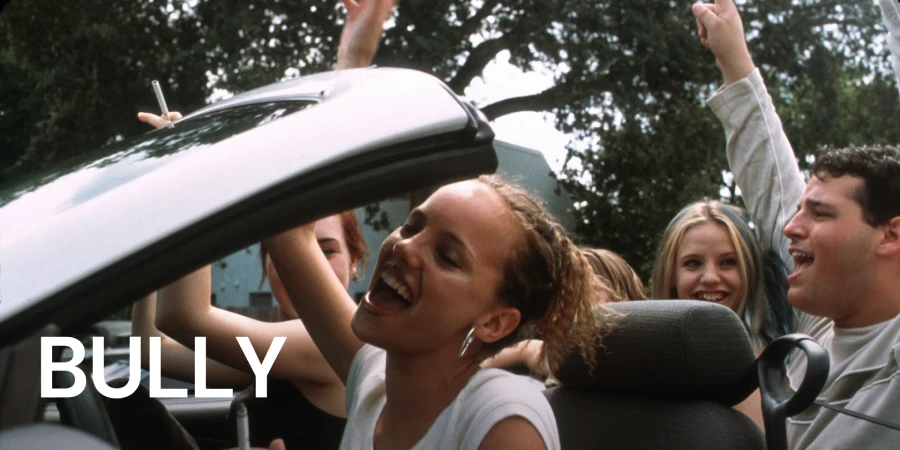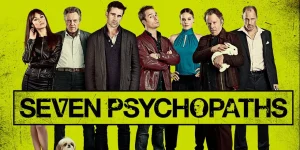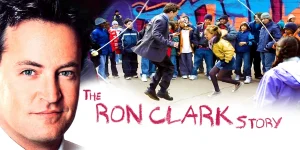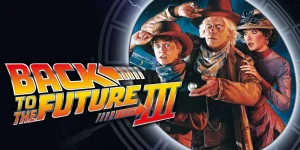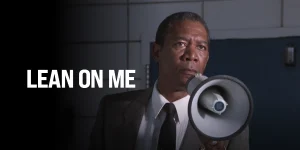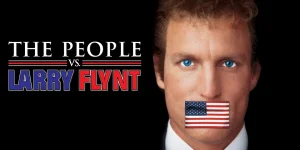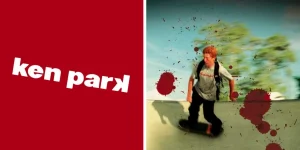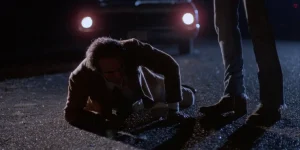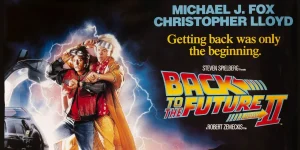Bully (2001), directed by Larry Clark, is a raw, disturbing drama based on real events. It explores the dark side of youth, peer pressure, and violence in suburban America. The film follows a group of teenagers as they plot and carry out the murder of a friend they consider a bully. Gritty, controversial, and emotionally draining, the film dives into the psychological and social factors that led to a real-life crime in South Florida.
Table of Contents
ToggleDetailed Summary
Introduction: A Toxic Friendship
The story begins in South Florida, where we meet Marty Puccio (played by Brad Renfro), a quiet and somewhat passive teenager who is under the control of his domineering best friend, Bobby Kent (Nick Stahl). Bobby constantly abuses Marty—physically, emotionally, and even sexually. He manipulates and humiliates Marty at every turn, calling him slurs, beating him up, and sabotaging his relationships.
Marty is too timid to stand up for himself, and their relationship has become something dark and dependent, bordering on codependency. Their dynamic is toxic and psychologically unsettling.
Enter Lisa and the Others
Things take a turn when Marty starts dating Lisa Connelly (Rachel Miner), a girl who quickly becomes disgusted by how Bobby treats Marty. Lisa, bold and manipulative in her own right, begins to suggest that maybe the only way to deal with Bobby is to kill him.
Slowly, Lisa ropes in others from their circle: Ali Willis (Bijou Phillips), Donny Semenec (Michael Pitt), and Derek Dzvirko (Daniel Franzese). They also enlist a would-be hitman known only as “Hitman” Derek Kaufman, who is mostly just talk.
Planning the Murder
What follows is a chilling escalation. The teens, most of whom are barely out of high school, fantasize about Bobby’s death. The plan becomes less about justice and more about thrill, groupthink, and adolescent chaos. There’s no clear ringleader—the group dynamic is impulsive and erratic.
The planning scenes are deeply unsettling, filled with casual talk of murder as if it were just another party. The group convinces themselves it’s justified: Bobby is toxic, dangerous, abusive. But the audience is made to question—do they really know what they’re doing?
The Night of the Killing
Eventually, the group lures Bobby to a canal under the pretense of a double date. At the site, they attack him suddenly. Bobby is stabbed, beaten with a baseball bat, and left to die in a shallow marsh. It’s a brutal, drawn-out scene made all the more disturbing by how amateurish and panicked it feels.
Most of the group participates directly, while others watch or run away. The murder isn’t surgical or professional—it’s chaotic, bloody, and real. Bobby begs for help, but no one stops. He dies alone, betrayed by the people he thought were his friends.
Aftermath and Breakdown
The group initially goes back to normal life, even going to the beach the next day. But guilt starts to eat away at them. They can’t agree on how to keep the murder a secret. Rumors begin to spread. Some can’t stop talking. Eventually, Lisa’s mother finds out and alerts the police.
One by one, the group is arrested. None of them are able to maintain their composure. Under questioning, nearly all break down or turn on each other. They’re teenagers—frightened, immature, and now facing life-altering consequences.
Movie Ending
The film ends with each of the teens receiving their sentences:
- Marty Puccio is sentenced to death (later commuted to life in prison).
- Lisa Connelly gets life plus 22 years.
- Donny Semenec and Derek Dzvirko receive long prison sentences.
- Ali Willis, who played a more minor role, serves a lighter sentence.
- Derek Kaufman, the so-called “hitman,” is sentenced to life.
The final scenes are quiet, grim, and void of melodrama. We see real photos of the actual people involved, reinforcing that this horror wasn’t fiction. There’s no redemption arc, no catharsis—just tragedy, wasted youth, and the grim price of poor choices driven by hate and passivity.
The ending drives home that the murder wasn’t a premeditated plan by hardened criminals—it was the result of a group of scared, angry teenagers making the worst possible decision with no real sense of consequence.
Are There Post-Credits Scenes?
No, Bully does not include any post-credits scenes. The credits are stark and straightforward, featuring real-life photos of the people involved, reinforcing the film’s based-on-true-events nature.
Type of Movie
Bully is a crime drama and psychological thriller with strong elements of true crime. It’s also considered a social realism film, portraying youth culture, violence, and dysfunctional relationships in an unfiltered way. The film is not for the faint of heart—it includes graphic violence, drug use, and explicit sexual content.
Cast
- Brad Renfro as Marty Puccio
- Nick Stahl as Bobby Kent
- Rachel Miner as Lisa Connelly
- Bijou Phillips as Ali Willis
- Michael Pitt as Donny Semenec
- Daniel Franzese as Derek Dzvirko
- Leo Fitzpatrick as Frank
- Kelli Garner as Heather Swallers
- Nathalie Kelley in a minor role
Film Music and Composer
The score is composed by Reinhold Heil and Johnny Klimek. The soundtrack leans heavily into early 2000s alternative and rock music, reflecting the reckless, party-oriented lives of the teens. The music shifts from upbeat to eerie as the film progresses, underscoring the moral collapse of the characters.
Filming Locations
- Filmed mostly in Florida, specifically the Miami-Dade and Broward County areas, to mirror the real-life setting of the crime.
- Realistic suburban homes, empty lots, and dingy strip malls enhance the film’s sense of gritty realism.
- The canal scene was shot in a remote part of the Everglades, capturing the eerie, isolated atmosphere crucial to the murder sequence.
Awards and Nominations
- Nick Stahl received critical praise and several Independent Spirit Award nominations for his chilling performance.
- The film was nominated for a Grand Special Prize at the Deauville Film Festival.
- While not widely awarded, Bully has gained a cult following and is often cited in discussions of impactful true-crime cinema.
Behind the Scenes Insights
- Based on the 1993 murder of Bobby Kent, adapted from the non-fiction book Bully: A True Story of High School Revenge by Jim Schutze.
- The real Marty Puccio approved of the film but later expressed concern over some inaccuracies.
- Larry Clark insisted on casting relatively unknown young actors for realism, even though many scenes involved nudity and explicit content.
- Several cast members reportedly found the subject matter emotionally draining.
- Filming the murder scene was extremely difficult—shot over several nights to capture the realism.
Inspirations and References
- Primary source: Bully: A True Story of High School Revenge by Jim Schutze.
- The book dives into court transcripts, interviews, and background on each participant.
- Larry Clark’s own interest in youth culture and moral decline was a major thematic driver.
Alternate Endings and Deleted Scenes
There are no major alternate endings, but some courtroom scenes and psychological evaluations were reportedly cut for pacing.
An extended scene of the group celebrating post-murder was also shortened, as it was seen as too disturbing.
Book Adaptations and Differences
- The film is largely faithful to Schutze’s book, but dramatizes certain interactions.
- The film downplays some participants’ mental health backgrounds.
- The book offers a more analytical breakdown of each teen’s psychological makeup and how they were influenced by one another.
Memorable Scenes and Quotes
Key Scenes
- Bobby assaulting Marty in front of his friends, symbolizing his dominance.
- The murder at the canal—a long, chaotic, and horrifying scene.
- The group celebrating at the beach after the murder, showing their emotional disconnection.
- Lisa’s mother confronting her and calling the police.
Iconic Quotes
- Lisa: “He was gonna kill Marty. We had no choice.”
- Marty (to Bobby): “You’ve always treated me like a dog.”
- Derek (the hitman): “You kids don’t know what the hell you’re doing.”
Easter Eggs and Hidden Details
- Real mugshots and photos of the actual teens involved are used during the credits.
- Bobby’s car and wardrobe closely resemble those of the real Bobby Kent.
- The diner scenes mimic actual places mentioned in police records.
Trivia
- Nick Stahl had to be convinced to take the role due to its disturbing nature.
- Rachel Miner and Brad Renfro were praised for their intense on-screen chemistry.
- Larry Clark reused many of his techniques from Kids (1995), such as handheld cameras and raw lighting.
Why Watch?
Bully is not entertaining in the traditional sense. It’s confrontational, heavy, and often uncomfortable. But it’s a powerful examination of peer pressure, manipulation, and the consequences of violence. It’s a film that stays with you, not because it’s sensational, but because it feels painfully real.
If you’re drawn to true-crime stories or films that explore the darker aspects of adolescence, this film offers a haunting and unforgettable experience.
Director’s Other Movies
- Kids (1995)
- Ken Park (2002)
- Wassup Rockers (2005)
- Marfa Girl (2012)
- The Smell of Us (2014)
Recommended Films for Fans
- Kids (1995)
- Thirteen (2003)
- Alpha Dog (2006)
- River’s Edge (1986)
- Heavenly Creatures (1994)
- Elephant (2003)
- Mean Creek (2004)

